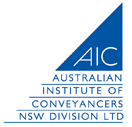If you are saving up to buy your first home, a First Home Saver Account might be just the thing you need to give your savings a boost to help you reach your dream of owning your own home faster!
A First Home Saver Account is a special account where the government will increase your savings by adding 17% of your contributions for the financial year, up to a capped amount. For the 2013-14 year this cap is $6,000 making the maximum amount that the government will contribute as $1,020.
There are lots of great benefits of these accounts
- Free money contributed by the government
- Make as many or as little deposits as you like each year, up to a maximum amount that the account balance can reach. This cap is $90,000 for 2013-14.
- The money added by the government is paid in a lump sum once a year, usually around December.
- You do not need to close the account when you reach the cap, however you can’t make further deposits and so the government contributions cease.
- Other people such as mum and dad can also make deposits in your account
- Earn interest on all the money in your account – that’s the money you, your parents and the government put in
- You don’t have to report the interest on your tax return; the account provider pays the tax on these accounts, but make sure you ask if they are passing this cost onto you.
- The money in this account is not included in income and assets tests for various government benefits such as family tax benefit
- You don’t pay any tax on the money when you withdraw it.
- A first home saver is an individual account, but you can buy a house with a partner whether or not they have a first home saver account.
- You have a 14-day cooling-off period when you first open your account
There are also some not so great parts about the account which you will need to consider
- You can’t salary sacrifice payments into your first home saver account.
- The money that you save can only be used to pay the deposit on a home or land or other costs sustained when you buy or build your first home.
- You have to keep the money in the account for a minimum period of time currently 4 years.
- If you lose your eligibility to hold an account, do not buy a house or change your mind you cannot simply close your account, withdraw the money and spend it. The money must be transferred into a superannuation account, unless you are over 60.
- You can’t make partial withdrawals.
- You can’t take money out of a first home saver account even if you are experiencing financial hardship.
You need to have contributed at least $1,000 per year to your account in at least four financial years – the four-year rule. You need to be aware that you cannot access this money until you buy or build your first home, but if you are saving for that event then 17% government contributions is a fantastic investment.
Sound good? Wondering how you get one? Well to receive the benefits you must meet the following requirements:-
- You must be aged 18 to 65 years old when you open the account
- You must not have owned a house in Australia or Norfolk Island
- You must be an Australian resident.
- You must contribute at least $1,000 in four or more financial years
- You must use your account funds to buy or build a home you will live in for at least six months.
- You must withdraw all your savings before settling the purchase contract or completing the construction
First Home Saver Accounts were first offered on 1 October 2008, and now in 2014 many financial institutions are no longer offering these accounts. This may be because people are concerned about how locked in their money is, or it may be because they are not aware that the accounts exist. First Home Saver Accounts have fairly strict rules and so won’t be right for everybody, and not all first home saver accounts are the same, so as always before you choose an account, you should read the product disclosure statement provided by the financial institution.
Here is a list of Financial Institutions currently providing First Home Saver Accounts:-
- AMP Bank Limited – ABN 15 081 596 009
- Credit Union SA Ltd – ABN 36 087 651 232
- Hume Building Society Ltd – ABN 85 051 868 556
- Hunter United Employees’ Credit Union Limited – ABN 68 087 650 182
- IMB Ltd – ABN 92 087 651 974
- Members Equity Bank Pty Limited – ABN 56 070 887 679
- Police Financial Services Limited – ABN 33 087 651 661
- Railways Credit Union Limited – ABN 91 087 651 090
- Teachers Mutual Bank Limited – ABN 30 087 650 459
- The Police Department Employees’ Credit Union Limited – ABN 95 087 650 799
- Victoria Teachers Limited – ABN 44 087 651 769
- Wyong Council Credit Union Ltd – ABN 29 087 650 897
- The Trust Company (Superannuation) Limited – ABN 49 006 421 638
When you buy or build your first home, you can withdraw your saving, close your account, and you will be that much closer to paying your mortgage back and owning your home debt free.
I hope that you have found this information helpful. If you wish to find out more about First Home Saver Accounts, please look at the following links, or contact your financial adviser to discuss the best plan for your circumstances. Best of luck with your saving goals.
http://www.ato.gov.au/firsthomesaver
http://www.homesaver.treasury.gov.au/content/default.asp
https://www.moneysmart.gov.au/managing-your-money/banking/savings-accounts/first-home-saver-accounts
https://www.moneysmart.gov.au/tools-and-resources/calculators-and-tools/first-home-saver-calculator
http://www.hunterunited.com.au/savings-savings-accounts.html



